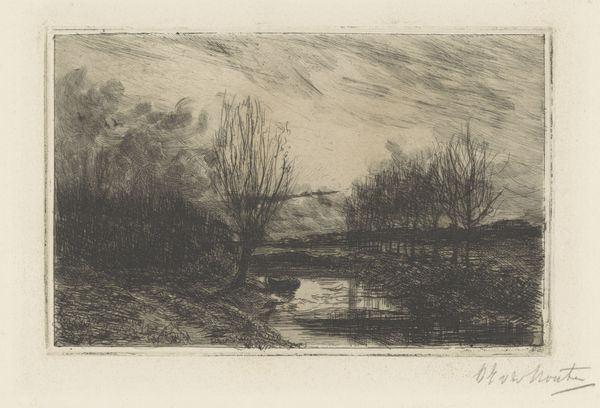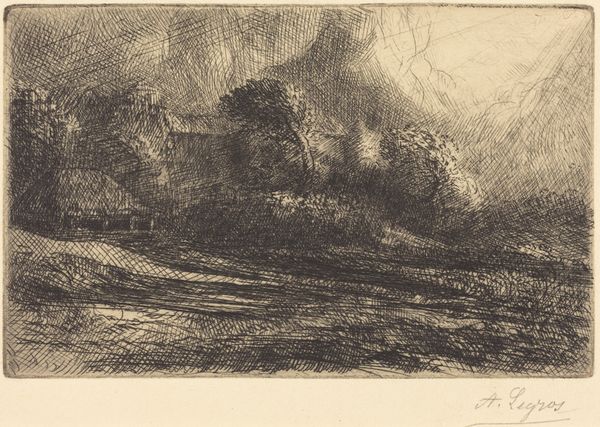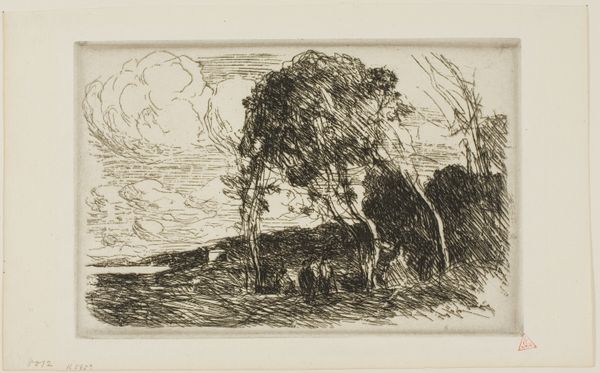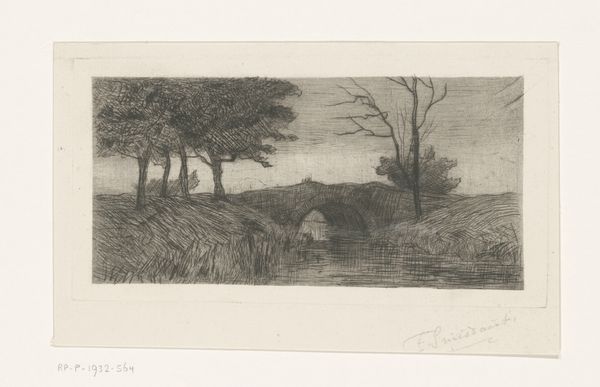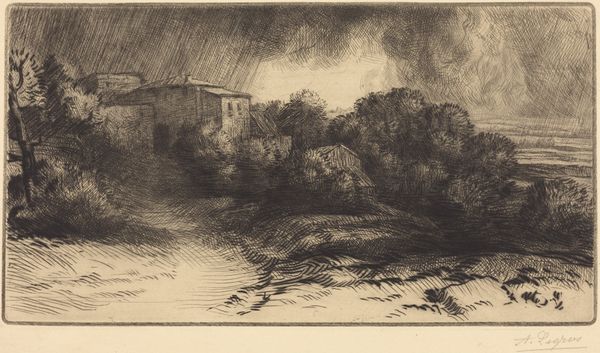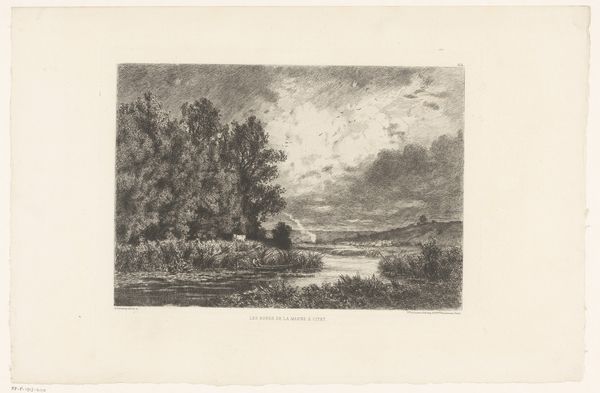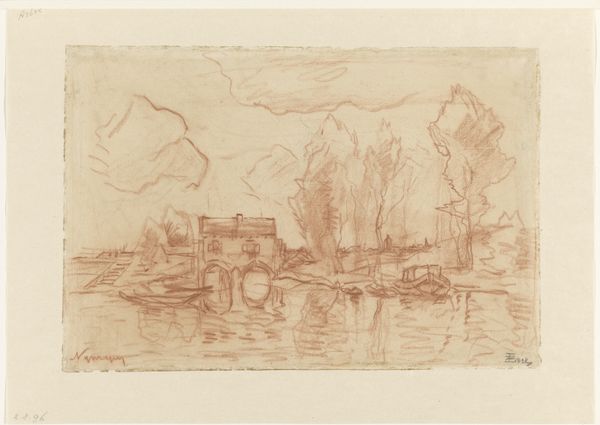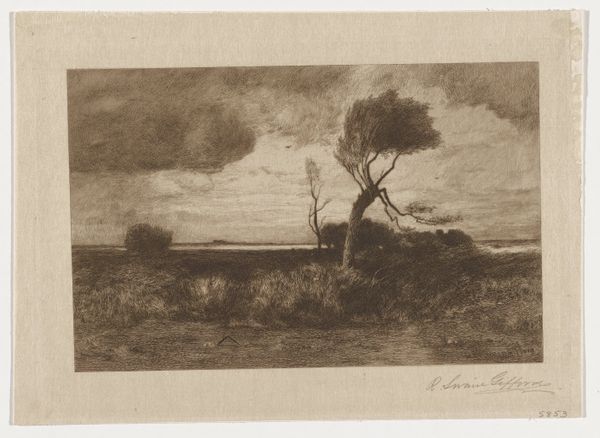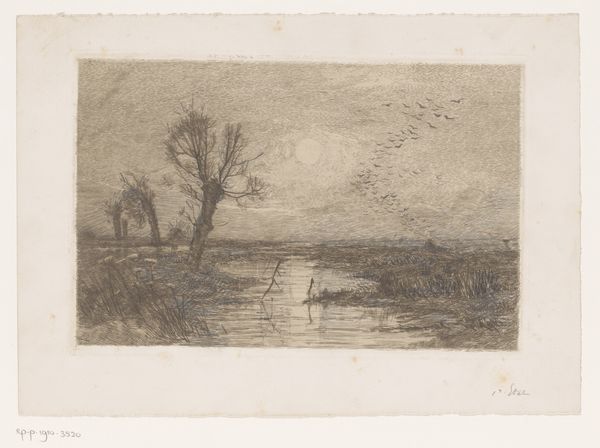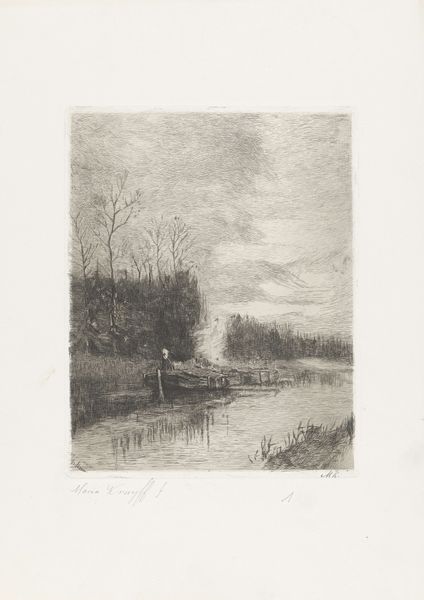
print, etching
# print
#
etching
#
landscape
#
realism
Dimensions: height 100 mm, width 139 mm
Copyright: Rijks Museum: Open Domain
Editor: Here we have Etha Fles's "Huizen onder een zware lucht," or "Houses Under a Heavy Sky," an etching created sometime between 1867 and 1910. The somber scene and desolate landscape evoke a feeling of isolation. What do you see in this print? Curator: It’s compelling how Fles uses the landscape not just as scenery, but as a mirror to reflect the social and emotional climate of her time. Considering this work falls within a period of significant social change and growing industrialization, doesn't the oppressive sky and the huddled buildings speak to the anxieties and uncertainties many felt then? Editor: I hadn't thought about it that way. The "heavy sky" feels personal, but you're right, it could represent a much larger feeling of unease. Do you think Fles was making a deliberate political statement? Curator: It's hard to say definitively, but artists like Fles were acutely aware of the societal shifts occurring around them. The choice of a desolate landscape, rendered in such a stark and unforgiving manner, invites us to consider what is being lost or threatened by these changes. How might this image resonate with contemporary concerns about environmental degradation or the displacement of communities? Editor: That’s a powerful connection. The solitary tree, almost skeletal, becomes a symbol of resilience, or perhaps loss. What do you make of its prominent placement? Curator: The lone tree serves as a powerful visual metaphor. Stripped bare, it represents vulnerability and the enduring strength needed to weather difficult times. It reminds us of the vital connection between the land, the people, and the social fabric they create. Considering feminist interpretations of landscape, what stories do you think Fles, as a woman artist, might be telling through this work about women's relationship to space and place? Editor: That's a new perspective for me to consider! I guess I was focused on the overall gloom, but framing it through these lenses really opens up the potential meanings. Curator: Exactly. Art provides this crucial meeting point. I hadn't considered the artist's perspective so clearly until this dialogue. Editor: And I'm now understanding how art reflects society! Thank you.
Comments
No comments
Be the first to comment and join the conversation on the ultimate creative platform.
